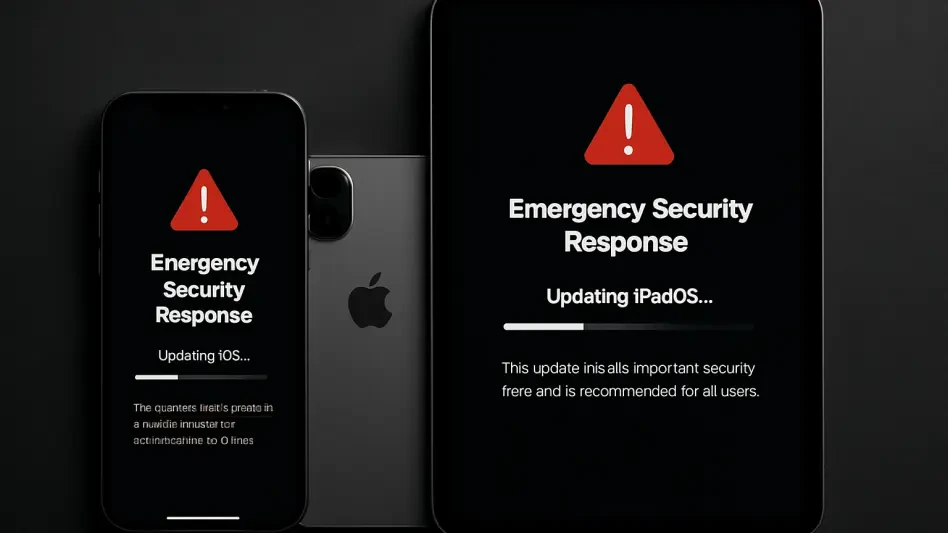In an era where digital threats evolve at an alarming pace, a single vulnerability can compromise the security of millions of devices in the blink of an eye. Apple recently issued an urgent security update for iOS 18.6.2 and iPadOS 18.6.2 to address a critical zero-day flaw actively exploited by sophisticated attackers. This vulnerability, tied to the core image processing system, poses a severe risk to a vast array of devices, from iPhones to iPads, potentially allowing malicious actors to execute harmful code. The urgency of this situation cannot be overstated, as real-world attacks are already underway, targeting high-value individuals with advanced techniques. This development serves as a stark reminder of the persistent dangers lurking in everyday functionalities like image handling, which users often take for granted.
Understanding the Threat Landscape
The Nature of the Zero-Day Vulnerability
A critical flaw, identified as CVE-2025-43300, resides in the ImageIO framework of Apple’s operating systems, creating a dangerous opportunity for attackers. This out-of-bounds write issue can lead to memory corruption when a device processes a specially crafted malicious image file, opening the door for unauthorized code execution. Apple has confirmed that this vulnerability is not a theoretical risk but one actively exploited in highly sophisticated attacks, likely orchestrated by nation-state actors or advanced persistent threat groups. The severity lies in how fundamental image processing is to daily device usage—whether through browsing, messaging, or email, users are constantly exposed to potential exploitation vectors. Such a flaw underscores the ingenuity of cyber adversaries who target seemingly innocuous system components to gain access to sensitive data or control over devices, affecting millions globally.
Scope and Impact on Apple Devices
The reach of this vulnerability is staggering, affecting a wide range of Apple hardware, including iPhone XS and later models, as well as numerous iPad variants like the iPad Pro, iPad Air, and iPad mini from various generations. This extensive applicability means that a significant portion of Apple’s user base is at risk, amplifying the urgency of the situation. The flaw’s connection to a core function like image processing heightens its danger, as malicious images can be delivered through everyday channels such as email attachments or messaging apps, often without raising suspicion. Targeted attacks exploiting this issue suggest a focus on high-value individuals, but the potential for broader impact remains a concern. Security experts emphasize that the active exploitation of this flaw in real-world scenarios leaves no margin for delay in applying protective measures, as the consequences of compromise could be devastating for both personal and professional data security.
Apple’s Response and User Action
Technical Fixes and Security Measures
Apple’s swift response to this critical issue involved releasing emergency updates for iOS 18.6.2 and iPadOS 18.6.2, incorporating enhanced bounds checking within the ImageIO framework to prevent memory corruption. This technical safeguard ensures that data cannot be written outside allocated memory limits, addressing the root cause of the vulnerability. The company’s security advisory reflects a commitment to coordinated disclosure, withholding specific details about the attacks until patches are widely available to avoid aiding potential exploiters. The language used by Apple, describing the attacks as “extremely sophisticated,” hints at the complexity and intent behind the exploitation, often linked to state-sponsored entities. This proactive approach demonstrates a dedication to user safety, though it also highlights the ongoing challenge of staying ahead of increasingly advanced cyber threats targeting core system functionalities.
Urgent Steps for Device Protection
Immediate action is paramount for users to safeguard their devices against this actively exploited vulnerability, as delays could result in severe security breaches. Updating to the latest iOS and iPadOS versions is a straightforward process accessible through Settings > General > Software Update on compatible devices. Security professionals and Apple alike stress that procrastination is not an option, given the confirmed real-world attacks leveraging malicious images through various delivery methods like harmful websites or messaging platforms. The trend of cyber threats targeting integral features such as image processing points to a broader need for vigilance among users. Beyond installing updates, adopting safe digital habits—like avoiding suspicious links or attachments—can further mitigate risks. Reflecting on this incident, it becomes evident that Apple’s timely patch release and transparent communication played a crucial role in curbing potential damage, setting a precedent for handling future threats with equal urgency.








